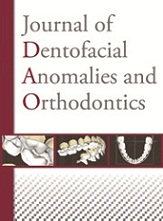Article contents
Usefulness of occlusal splints
Published online by Cambridge University Press: 23 August 2012
Abstract
Dentists often use occlusal splints in the management of occlusodontic problems. Because they are considered to provide non-invasive and reversible treatment they are therapeutic devices that conform well to the current philosophy governing protocols for therapy of the masticatory system. Proper design and placement of occlusal splints requires that they respond to precise indications and that practitioners fabricate and maintain them with scrupulous care to assure that patients benefit from them. Splints help practitioners adjust the relationship between the jaws either by suppressing blockage of teeth to relax muscles or by repositioning the condyles in the articular fossas to recapture discs or to reduce painful excess intra-articular pressure derived from degenerative diseases.
Occlusal splints are also suitable as diagnostic tools to validate and evaluate contributions of behavioral, postural, and psychosocial factors to the multifactorial etiology of malfunctions of the masticatory apparatus. The simple introduction into a patient’s mouth of an appliance whose benefits have been well described to that patient will serve as a forward step in the psychological management of a TMD problem, especially if bruxism is one of its components.
- Type
- Research Article
- Information
- Copyright
- © RODF / EDP Sciences
- 3
- Cited by


